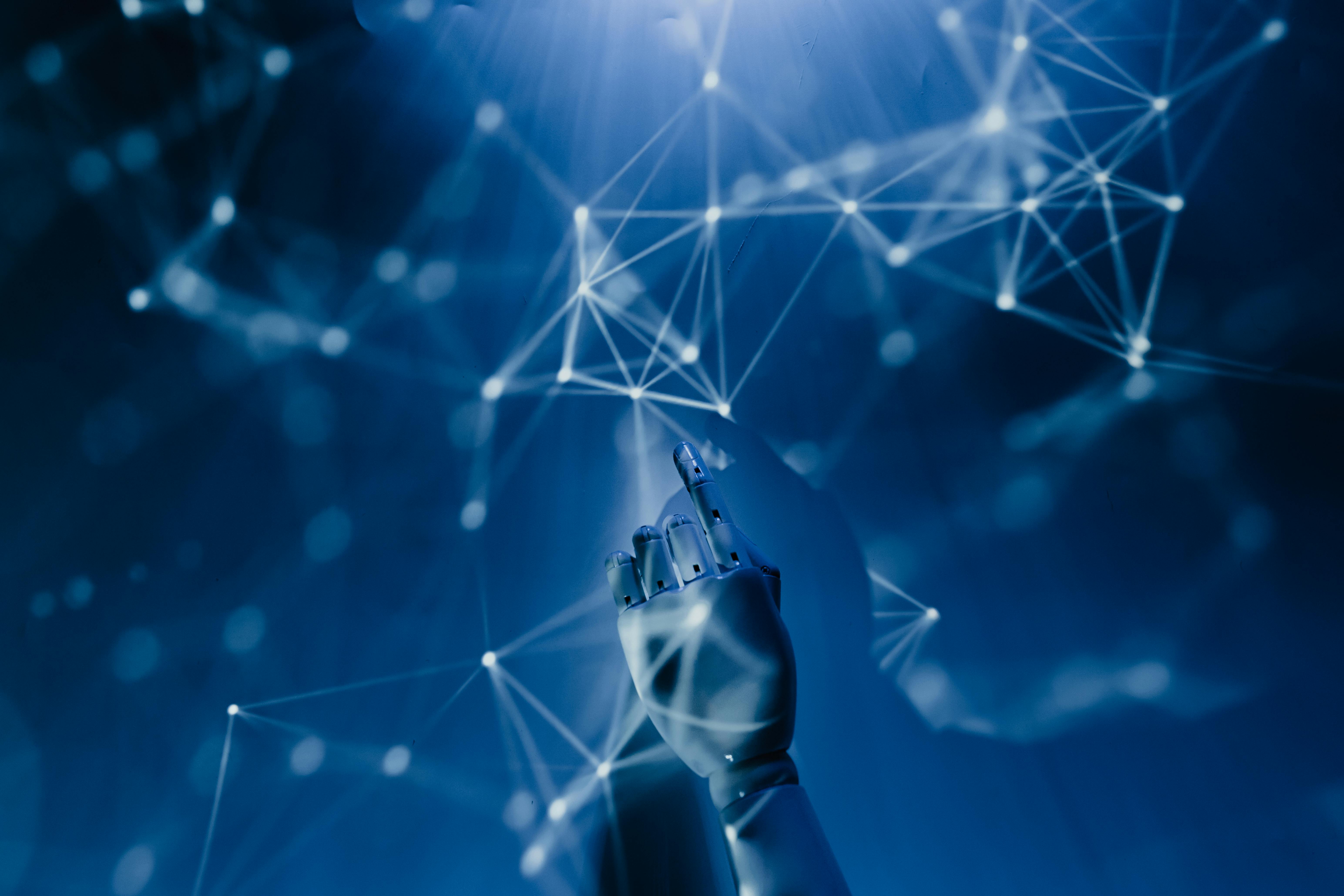
The relationship between artificial intelligence and human work is perhaps the most consequential economic and social question of our time. As AI systems become increasingly sophisticated, they are not merely changing how we work—they are fundamentally reshaping what work means, who does it, and how economic value is created and distributed. This transformation promises unprecedented productivity gains and new forms of human fulfillment, but it also poses significant challenges to traditional employment models and social structures built around work.
The Historical Context: Technology and Labor Through Time
To understand the current AI revolution's impact on work, we must first examine how technological advancement has historically affected employment. The relationship between technology and labor has always been complex, marked by periods of displacement followed by adaptation and the emergence of new types of work.
The Industrial Revolution of the 18th and 19th centuries provides a compelling parallel. Steam engines and mechanized production initially displaced millions of agricultural workers and artisans. Entire categories of work—from hand weaving to manuscript copying—virtually disappeared. Yet this same technological revolution ultimately created far more jobs than it destroyed, giving rise to new industries, urban centers, and forms of specialized labor that were unimaginable before industrialization.
The pattern repeated throughout the 20th century. The automobile displaced horse-drawn transportation and eliminated jobs for stable hands, blacksmiths, and carriage makers, but it created entirely new industries around automotive manufacturing, maintenance, and support services. The personal computer revolution of the 1980s and 1990s eliminated many clerical and administrative jobs but generated new categories of work in software development, digital design, and information technology services.
However, the AI revolution differs from previous technological transformations in several crucial ways. First, its scope is broader—AI has the potential to automate cognitive tasks that were previously thought to be uniquely human. Second, its pace is faster—AI capabilities are advancing exponentially rather than linearly. Third, its penetration is deeper—AI is not just creating new tools but fundamentally changing how decisions are made and value is created across virtually every sector of the economy.
The Current State of AI in the Workplace
Automation of Routine Tasks
The most visible impact of AI on work today is the automation of routine, repetitive tasks across both blue-collar and white-collar occupations. In manufacturing, AI-powered robots are handling increasingly complex assembly operations, quality control, and logistics. In offices, AI systems are processing invoices, scheduling appointments, analyzing documents, and handling customer service inquiries.
This automation is happening faster than many predicted. Customer service chatbots now handle millions of inquiries daily with minimal human intervention. AI-powered trading algorithms execute the majority of financial transactions. Automated content moderation systems review billions of social media posts. These applications demonstrate AI's current capability to handle well-defined, rule-based tasks at scales and speeds impossible for human workers.
However, current AI automation is still primarily limited to tasks with clear parameters and predictable inputs. Most real-world jobs involve complex combinations of routine and non-routine tasks, requiring flexibility, creativity, and contextual judgment that remain challenging for AI systems. This creates opportunities for human-AI collaboration rather than simple replacement.
Augmentation and Enhancement
Perhaps more significantly than replacement, AI is augmenting human capabilities and enhancing productivity across many professions. Doctors use AI-powered diagnostic tools to analyze medical images more accurately and quickly than ever before. Lawyers employ AI systems to review contracts and legal documents, freeing them to focus on strategy and advocacy. Teachers utilize AI-powered educational platforms that adapt to individual student needs and learning styles.
In creative fields, AI tools are becoming powerful collaborators. Graphic designers use AI to generate initial concepts and variations, writers employ AI assistants for research and editing, and musicians leverage AI for composition and arrangement. These applications demonstrate AI's potential to enhance rather than replace human creativity and expertise.
This augmentation model suggests a future where AI handles routine aspects of complex jobs while humans focus on higher-level tasks requiring judgment, creativity, and interpersonal skills. However, this transition requires significant adaptation from workers, employers, and educational institutions.
Industries in Transformation
Healthcare: AI as a Diagnostic and Treatment Partner
Healthcare represents one of the most promising areas for AI-human collaboration. AI systems can analyze medical images, predict patient outcomes, and suggest treatment options with remarkable accuracy. However, rather than replacing doctors, these tools are enhancing medical practice by providing powerful diagnostic support and freeing healthcare providers to focus on patient care and complex decision-making.
Radiologists are using AI systems that can detect cancers in mammograms and CT scans with greater accuracy than human analysis alone. Emergency room physicians are leveraging AI tools that can quickly assess patient symptoms and recommend treatment protocols. Surgeons are working with AI-powered robotic systems that provide enhanced precision and control during complex procedures.
The healthcare workforce is adapting by developing new skills in working with AI systems while deepening their expertise in areas that require human judgment and empathy. This evolution is creating new roles—such as AI system specialists in hospitals and medical AI researchers—while enhancing traditional medical positions.
Education: Personalized Learning and Administrative Efficiency
Educational institutions are experiencing significant transformation as AI enables personalized learning at scale. AI tutoring systems can adapt to individual student learning styles and paces, providing customized instruction that was previously possible only in one-on-one settings. Automated grading systems handle routine assessments, freeing teachers to focus on curriculum development and student mentoring.
However, the role of human educators remains crucial and is evolving rather than diminishing. Teachers are becoming learning facilitators and mentors, focusing on developing students' critical thinking, creativity, and social skills—areas where human guidance remains irreplaceable. The most effective educational environments are emerging as partnerships between AI systems and human educators.
New roles are emerging in educational technology, curriculum design for AI-enhanced learning, and digital literacy instruction. Schools and universities are also creating positions for AI coordinators and educational data analysts who help institutions leverage AI tools effectively while protecting student privacy and ensuring equitable access.
Finance: Algorithmic Trading and Personalized Services
The financial services industry has been at the forefront of AI adoption, with algorithmic trading, robo-advisors, and AI-powered fraud detection becoming standard practices. While this has led to job displacement in some areas—particularly routine trading and basic financial analysis—it has also created opportunities for professionals who can work with AI systems and provide high-touch, personalized services.
Financial advisors are increasingly focusing on relationship management and complex financial planning while leveraging AI tools for market analysis and portfolio optimization. Investment analysts are using AI to process vast amounts of market data and identify patterns that inform strategic decisions. Risk management professionals are working with AI systems that can detect fraudulent activities and assess credit risks more accurately than traditional methods.
The industry is also seeing the emergence of new roles in fintech, algorithmic audit and compliance, and AI system development specifically tailored for financial applications. These positions require combinations of financial expertise and technical skills that are creating new career pathways.
The Skills Revolution: Adapting Human Capabilities
Uniquely Human Skills
As AI systems become more capable of handling routine cognitive tasks, the premium on uniquely human skills is increasing. Emotional intelligence—the ability to understand and manage emotions in oneself and others—is becoming increasingly valuable as workplaces become more complex and collaborative. Creative problem-solving skills that can generate novel solutions to unprecedented challenges are in high demand.
Critical thinking and ethical reasoning are essential as workers must evaluate AI recommendations and make decisions about their implementation. Communication and interpersonal skills remain crucial for collaboration, negotiation, and leadership. Cultural competency and the ability to work across diverse global teams are increasingly important as AI enables more distributed and flexible work arrangements.
Complex systems thinking—the ability to understand how different components of organizations and technologies interact—is becoming essential as workplaces integrate multiple AI systems. Adaptability and continuous learning capabilities are perhaps the most important skills of all, as the pace of technological change requires workers to constantly update their knowledge and capabilities.
Human-AI Collaboration Skills
A new category of skills is emerging around effective human-AI collaboration. Workers must learn how to interact with AI systems, understand their capabilities and limitations, and integrate AI-generated insights with human judgment. This includes knowing when to trust AI recommendations and when to override them based on context that the AI system might not understand.
Prompt engineering—the skill of communicating effectively with AI language models—is becoming valuable across many professions. Data literacy is essential for understanding how AI systems work and evaluating their outputs. AI ethics awareness helps workers identify and address potential biases or harmful outcomes from AI systems.
Quality control and verification skills are crucial for reviewing and validating AI-generated work. Workers must develop intuition about when AI outputs seem reasonable and when they require additional scrutiny. This requires domain expertise combined with understanding of how AI systems can fail or produce unexpected results.
Economic Implications and Labor Market Dynamics
Productivity Gains and Economic Growth
AI adoption is driving significant productivity gains across many sectors, with some estimates suggesting potential economic growth of trillions of dollars globally over the next decade. These productivity improvements come from both the automation of routine tasks and the enhancement of human capabilities through AI tools.
In manufacturing, AI-powered predictive maintenance reduces downtime and extends equipment life. In service industries, AI systems can handle multiple customer interactions simultaneously while providing personalized experiences. In knowledge work, AI tools can analyze vast amounts of information and generate insights that would take human workers much longer to develop.
However, the benefits of these productivity gains are not automatically distributed equally throughout society. Without proper policies and interventions, AI-driven productivity improvements could lead to increased inequality as the benefits flow primarily to capital owners rather than workers. This has led to discussions about new models for sharing the benefits of AI advancement, including profit-sharing programs and universal basic income proposals.
Job Displacement and Creation
While AI is eliminating many routine jobs, it is also creating new categories of work. AI system development, deployment, and maintenance require large numbers of skilled workers. Data annotation and training require human expertise to ensure AI systems learn appropriate patterns and behaviors. AI safety and ethics roles are emerging as critical functions for ensuring responsible AI deployment.
New service industries are emerging around AI capabilities. AI consulting helps organizations implement AI systems effectively. AI training and education services help workers develop new skills. AI system integration and customization services help organizations adapt AI tools to their specific needs.
However, the new jobs being created often require different skills than those being displaced, creating challenges for workers transitioning between roles. The geographic distribution of new AI-related jobs may also differ from where traditional jobs are being eliminated, potentially exacerbating regional economic inequalities.
Reskilling and Education: Preparing for the AI Era
Corporate Training and Development
Forward-thinking companies are investing heavily in reskilling their workforces to work effectively with AI systems. This training goes beyond technical skills to include understanding AI capabilities and limitations, ethical considerations in AI deployment, and best practices for human-AI collaboration.
Successful reskilling programs often combine online learning platforms with hands-on experience working with AI tools. They provide pathways for workers to transition from roles being automated to new positions that leverage AI capabilities. The most effective programs are tailored to specific industry contexts and job functions rather than offering generic AI training.
Companies are also developing internal mobility programs that help workers move between different roles as their organizations evolve with AI adoption. These programs recognize that the skills workers have developed in their current roles often transfer to new AI-enhanced positions with appropriate training and support.
Educational System Transformation
Educational institutions are grappling with how to prepare students for a workforce increasingly shaped by AI. This involves both teaching students how to work with AI tools and developing the uniquely human skills that will remain valuable in an AI-enhanced economy.
Computer science and data science programs are expanding to meet demand for AI-related skills, but institutions are also recognizing the need for AI literacy across all disciplines. Liberal arts programs are emphasizing critical thinking, creative problem-solving, and ethical reasoning skills that are essential for working effectively with AI systems.
New interdisciplinary programs are emerging that combine technical AI knowledge with domain expertise in fields like healthcare, education, and business. These programs recognize that the most valuable workers in the AI era will be those who can bridge the gap between AI capabilities and real-world applications.
Public Policy and Workforce Development
Governments are developing policies to support workforce transitions in the AI era. This includes funding for retraining programs, support for displaced workers, and investments in educational infrastructure. Some countries are experimenting with universal basic income pilots to provide economic security during technological transitions.
Public-private partnerships are emerging to address the scale of the reskilling challenge. These collaborations leverage the expertise of technology companies with the reach and public mission of educational institutions and government agencies. They aim to ensure that reskilling opportunities are available to all workers, not just those with existing advantages.
Labor unions are also adapting their roles to help workers navigate AI-driven changes. This includes negotiating for retraining opportunities, ensuring fair treatment during technological transitions, and advocating for policies that protect worker rights in an AI-enhanced economy.
Social and Psychological Dimensions of Work Transformation
The Meaning and Purpose of Work
As AI takes over routine tasks, workers are grappling with fundamental questions about the meaning and purpose of work. For many people, work provides not just income but also identity, social connection, and a sense of contribution to society. As AI changes the nature of work, these psychological and social functions of employment are also being transformed.
Some workers are finding greater satisfaction as AI handles routine aspects of their jobs, allowing them to focus on more creative and meaningful activities. Teachers report enjoying more time for mentoring students when AI handles administrative tasks. Healthcare workers appreciate being able to spend more time with patients when AI assists with documentation and analysis.
However, other workers experience anxiety and uncertainty about their role in an AI-enhanced workplace. They may feel devalued if AI systems can perform tasks they previously took pride in. They may worry about job security or feel overwhelmed by the need to constantly learn new skills.
Organizations are recognizing the need to address these psychological dimensions of AI adoption. This includes clear communication about how AI will be used, involvement of workers in AI implementation decisions, and support for developing new sources of professional identity and satisfaction.
Work-Life Balance and Flexibility
AI is enabling new forms of work flexibility that can improve work-life balance for many workers. AI-powered scheduling systems can optimize work arrangements based on both business needs and employee preferences. Remote work capabilities are enhanced by AI tools that facilitate collaboration and communication across distances.
Automation of routine tasks can free up time for workers to focus on activities they find more engaging and meaningful. This can lead to reduced stress and improved job satisfaction when managed effectively. However, it can also create pressure for increased productivity and expectations for constant availability that can negatively impact work-life balance.
The key is ensuring that the benefits of AI-enhanced flexibility are shared between workers and employers rather than simply intensifying work demands. This requires thoughtful management and potentially new policies around right to disconnect and work-time boundaries.
Global Perspectives and Inequality Concerns
Developed vs. Developing Economies
The impact of AI on work varies significantly between developed and developing economies. Developed countries with advanced technological infrastructure and skilled workforces may be better positioned to capture the benefits of AI advancement. They can more easily implement AI systems and retrain workers for new roles.
Developing countries face different challenges and opportunities. On one hand, they may struggle to keep pace with AI adoption due to limited infrastructure and resources for worker retraining. On the other hand, they may have opportunities to leapfrog traditional development patterns by implementing AI solutions in areas where legacy systems don't exist.
The global nature of AI development means that AI systems developed in advanced economies will be deployed worldwide, potentially creating dependencies and limiting local innovation. However, it also creates opportunities for global collaboration and knowledge sharing that could help address development challenges more effectively.
Addressing Inequality and Ensuring Inclusive Growth
One of the greatest challenges of the AI revolution is ensuring that its benefits are shared broadly rather than concentrated among those who already have advantages. This requires proactive policies and interventions to address several dimensions of inequality.
Access to AI tools and training must be democratized to prevent the creation of new digital divides. This includes ensuring that small businesses and workers in disadvantaged communities have opportunities to benefit from AI advancement rather than being left behind by it.
The design of AI systems themselves must consider equity and inclusion from the beginning rather than as an afterthought. This includes ensuring that AI systems work effectively for diverse populations and don't perpetuate existing biases or discrimination.
New economic models may be needed to share the benefits of AI-driven productivity gains. This could include profit-sharing programs, universal basic income, or new forms of social ownership of AI systems. The goal is ensuring that technological advancement leads to shared prosperity rather than increased inequality.
Future Scenarios: Multiple Pathways Forward
The Optimistic Scenario: Human Flourishing Through AI Partnership
In the most optimistic scenario, AI becomes a powerful partner that enhances human capabilities and frees people to focus on more creative, meaningful, and fulfilling work. Routine tasks are automated, allowing workers to develop new skills and take on more strategic and interpersonal roles.
This scenario features widespread reskilling programs that help workers transition to new roles, policies that ensure the benefits of AI advancement are shared broadly, and AI systems that are designed to augment rather than replace human capabilities. Work becomes more flexible and adaptable to individual preferences and life circumstances.
New forms of work emerge that were previously impossible, enabled by AI tools that provide new capabilities for creativity, analysis, and problem-solving. The economy grows significantly due to AI-driven productivity gains, and these benefits are distributed in ways that reduce rather than increase inequality.
The Challenging Scenario: Displacement and Disruption
In a more challenging scenario, AI adoption happens too quickly for workers and institutions to adapt effectively. Large numbers of jobs are eliminated faster than new ones are created, leading to widespread unemployment and social disruption.
The benefits of AI advancement flow primarily to technology companies and capital owners, while workers bear the costs of displacement without adequate support for transition to new roles. Inequality increases both within and between countries as some populations have better access to AI tools and training than others.
This scenario could lead to social and political instability as large segments of the population feel left behind by technological progress. It might result in backlash against AI development or policies that limit AI adoption in ways that also limit its potential benefits.
The Mixed Reality: Uneven Progress and Adaptation
The most likely scenario involves uneven progress with significant variation across industries, regions, and demographic groups. Some sectors and workers adapt successfully to AI integration, while others struggle with displacement and transition challenges.
This mixed reality requires ongoing attention to managing the transition effectively. It involves continuous investment in education and training, policies that support displaced workers, and efforts to ensure that the benefits of AI advancement are shared broadly rather than concentrated among those who are already advantaged.
Success in this scenario depends on collective action by governments, businesses, educational institutions, and civil society organizations to proactively address the challenges of AI-driven work transformation while maximizing its potential benefits.
Policy Recommendations and Collective Action
Government Policies for AI Workforce Transition
Effective government policies for managing AI workforce transitions must address both immediate displacement challenges and long-term structural changes. This includes robust unemployment insurance and retraining programs for displaced workers, investments in educational infrastructure to prepare future workers for AI-enhanced jobs, and policies that encourage responsible AI adoption by businesses.
Tax policies may need to be updated to address the changing nature of work and value creation in an AI economy. This could include taxes on AI systems or automation that fund retraining programs, or new forms of universal basic income that provide economic security during technological transitions.
International cooperation is essential for addressing the global nature of AI development and its impacts on work. This includes sharing best practices for workforce transition, coordinating on AI development standards, and ensuring that the benefits of AI advancement are shared equitably between countries.
Business Responsibilities and Best Practices
Companies deploying AI systems have responsibilities to their workers and communities that go beyond legal requirements. Best practices include involving workers in AI implementation decisions, providing comprehensive training and support for new technologies, and creating pathways for workers to transition to new roles within the organization.
Responsible AI deployment requires consideration of impacts on workers from the beginning of the design process rather than as an afterthought. This includes designing AI systems that augment rather than simply replace human capabilities where possible, and ensuring that AI implementation timelines allow for adequate worker adaptation.
Companies should also invest in the communities where they operate, supporting local educational institutions and workforce development programs. This creates a virtuous cycle where businesses benefit from a skilled workforce while contributing to community resilience and prosperity.
Individual Strategies for Thriving in an AI-Enhanced Economy
While structural changes are essential, individuals also need strategies for thriving in an AI-enhanced economy. This includes continuous learning and skill development, with particular attention to skills that complement rather than compete with AI capabilities.
Building networks and relationships remains crucial, as many opportunities in the AI era will come through human connections and collaborations. Developing cultural competency and the ability to work across diverse teams is increasingly important as AI enables more global and distributed work arrangements.
Staying informed about AI developments in one's industry and profession helps workers anticipate changes and prepare for transitions. This includes understanding both the opportunities and risks that AI presents for specific roles and career paths.
Conclusion: Navigating the Future of Human Work
The transformation of work by artificial intelligence represents one of the most significant challenges and opportunities facing humanity today. The choices we make now about how to develop, deploy, and govern AI systems will determine whether this technological revolution leads to human flourishing or increased inequality and social disruption.
The evidence suggests that AI's impact on work will be neither the utopian vision of universal liberation from drudgery nor the dystopian nightmare of mass unemployment. Instead, it will be a complex transformation that creates both opportunities and challenges, with outcomes that depend heavily on how well we manage the transition.
Success requires recognizing that the future of work is not predetermined by technological capabilities but will be shaped by conscious choices about how to integrate AI into human systems. This includes choices about which tasks to automate and which to keep human, how to distribute the benefits of AI-driven productivity gains, and how to support workers through periods of transition and adaptation.
The most promising path forward involves viewing AI as a tool for enhancing rather than replacing human capabilities, while simultaneously preparing for the reality that some jobs will be eliminated and new ones created. This requires unprecedented cooperation between technologists, policymakers, educators, business leaders, and workers themselves.
The stakes could not be higher. Work is not just an economic necessity but a fundamental source of meaning, identity, and social connection for billions of people. How we navigate the AI transformation of work will determine not just economic outcomes but the kind of society we become.
The future of work in the age of AI will ultimately be a reflection of our values and priorities as a society. By approaching this transformation thoughtfully and inclusively, we have the opportunity to create forms of work that are more meaningful, flexible, and fulfilling than what came before. The challenge is ensuring that this future is accessible to everyone, not just those who are already privileged.
The conversation about AI and the future of work is just beginning, and its outcome will be determined by the choices we make today. The future of human work—and human flourishing—hangs in the balance.



